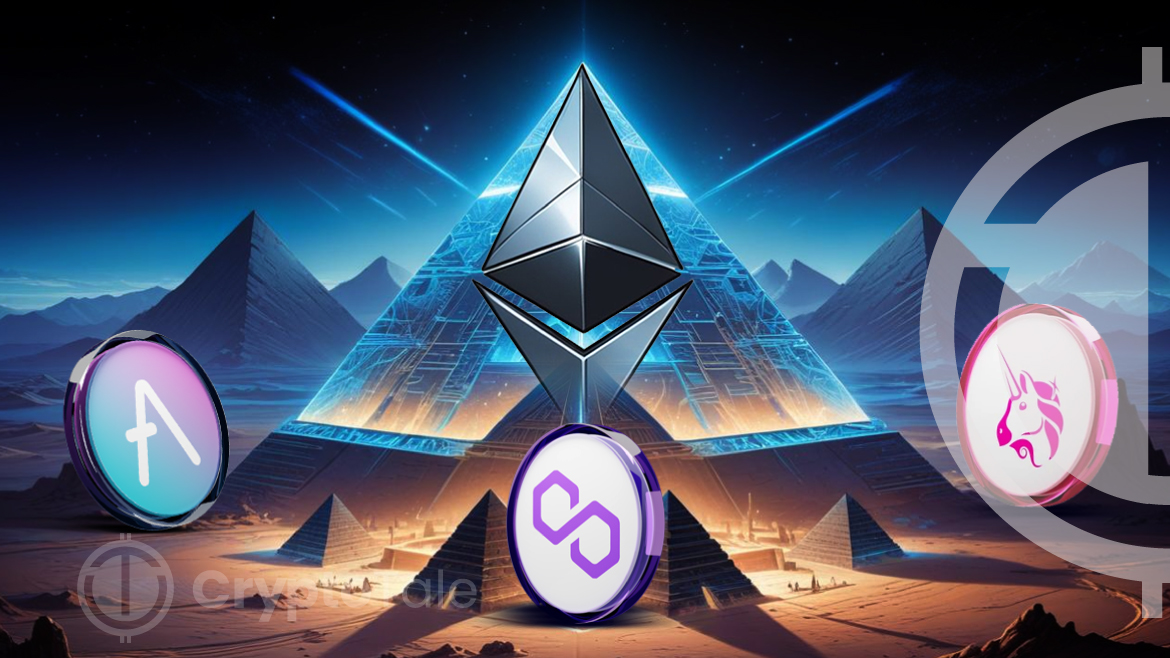- AAVE and Uniswap lead Ethereum’s DeFi growth through decentralized lending and trading.
- MATIC enhances Ethereum’s scalability by offering faster, cheaper Layer 2 transactions.
- These projects solve critical issues in the Ethereum ecosystem, driving its continued success.
AAVE, Uniswap (UNI), and Polygon (MATIC) are among the main Ethereum projects that help maintain the ecosystem’s growth. They have not only helped establish their niche within Ethereum but are helping to propel Ethereum forward as well. Grayscale Investments’ report on the Ethereum ecosystem emphasizes their significance. It reveals how these tokens have created differentiation in the competitive blockchain environment.
AAVE and UNI: Leading Ethereum’s Financial Revolution
Among the financial applications, AAVE and Uniswap are leading the decentralized finance on Ethereum. AAVE is a decentralized lending and borrowing platform. This enables users to receive interest for holding Crypto, or borrow Crypto without engaging a third party. This latest method of handling collateral and flash loans has attracted billions of liquidity.
This has placed AAVE among the leading DeFI platforms, with a market capitalization of $1.6 billion by August 2024. However, what distinguishes AAVE from other lending platforms is its flexibility to integrate new assets into its system.
Uniswap (UNI) is a decentralized exchange protocol. It has important functions within Ethereum’s decentralized trading segment. Uniswap allows users to trade tokens directly from their wallets thus eliminating third party intermediaries. Its current market capitalization is $4.6 billion as of writing. It has held its position over time by continuous enhancement, high market turnover, as well as accessibility, thus becoming the backbone of Ethereum DeFi.
Ethereum’s EIP-7781 to Improve Overall Throughput by 33%MATIC: Enhancing Ethereum’s Scalability
Polygon is a Layer 2 scaling solution intended to provide for a better and faster Ethereum network. It is cheaper too. It has attracted much attention given the high costs, and slow processing times that Ethereum users have been subjected to. It is able to achieve this since it operates transactions away from the central Ethereum network, while enhancing security. MATIC had a market capitalization of $3.8 billion at the time of writing. Such a model has continued to help Polygon remain relevant when compared to other Layer 2 solutions like Arbitrum or Optimism.
What makes AAVE, UNI, and MATIC special and unique is the fact that they provide solutions for real issues in the Ethereum economy. AAVE decentralizes lending, UNI improves trading, and MATIC solves the scalability problem. All these projects are closely intertwined with Ethereum’s infrastructure. Thus, it gives them a competitive advantage over the competitors. Despite high competition, their proposed solutions are relevant and, along with a significant number of users, guarantee their leading positions in the crypto market.






